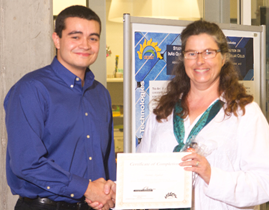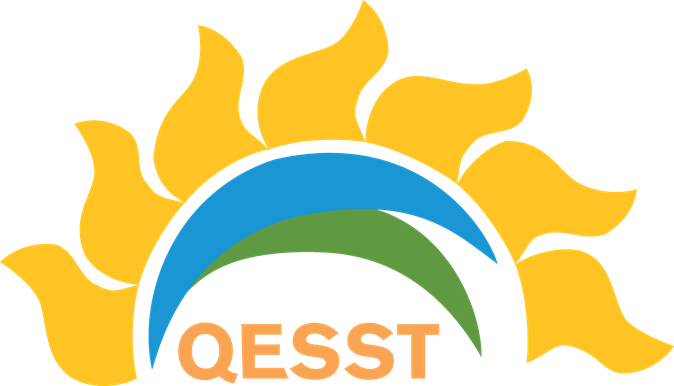Outcome/Accomplishment

QESST scholar Antony Aguilar was invited to present the extended oral talk at the 2016 IEEE Photovoltaics Specialist Conference in Portland, Oregon. Antony presented the paper, Development of Cu Plating for Silicon Heterojunction Solar Cells, representing the High Efficiency Silicon Solar Cell (HESSC) team directed by QESST faculty, Stuart Bowden. Co-authors included other QESST scholars and industry partners from Technic (Krystal Munoz, Lynne Michaelson, and Tom Tyson). The presentation described an alternative metallization to the standard low temperature Ag paste for Silicon Heterojunction Cells (SHJ) cells.
Impacts and Benefits
- Antony reported the results of a study comparing various patterning and plating methods for the deposition of Cu electrodes on transparent conductive oxides for silicon heterojunction solar cells. The best silicon heterojunction cell with Cu contacts directly electroplated on the sputtered Ag seed achieved 21.9% efficiency on 153 cm2
- A talented QESST undergraduate scholar transitioned to an ASU graduate program in Electrical Engineering with experience and confidence
Explanation and Background
Presenting the extended oral talk at IEEE is an unusual honor for an undergraduate student. It was Antony Aguilar’s first paper presentation; “I nearly passed out before presenting on the day of the conference because I was so nervous – I get nervous just thinking about it”. Antony received a lot of support in preparing to present, particularly from the HESSC lab manager, Stanislau Hersasimenka. Antony also appreciated the feedback he received from the IEEE audience, “Some people stayed after to talk to me about my research. They wanted to know what future work I was doing. They approached me like an experienced researcher.”
Antony was born in California, but grew up in Mesa, Arizona. Following high school, he enrolled in community college with an interest in forensic science, but soon switched to electrical engineering. Bouncing between four colleges to fulfill credit hours, Antony took a lot of classes while working Dave & Busters to support himself. “I worked there way too long and decided if I was going to do anything with my life I had to quit.” After successfully applying to and participating in the QESST REU, Antony transferred to Arizona State University and began working in the HESSC lab. There he became known for fixing lasers, designing Arduino circuits, and installing new safety measures for lab equipment. “That’s when Stas asked me if there was a way to contact probes to a solar cell. Little did I know that would become an [IEEE] paper and even my dissertation research.” Antony transitioned to graduate school in fall 2016.
In addition to being a committed scholar, Antony participates often in QESST outreach. “I think it’s important to inspire the next generation… I know for a fact if we were missing one of these brilliant people who work at our lab, there would be a huge gap in research. Everything we do here [at QESST] is important; the more people who do it the more chance we have of developing better solar cells, better, safer, cheaper products… I wish [QESST] came to my high school; I probably would have got interested a long time before I did. I was good at math and science, but there wasn’t much to hold my interest. If I had some inspiration like that, seeing what you could do with science, I might have got here a lot sooner.”
